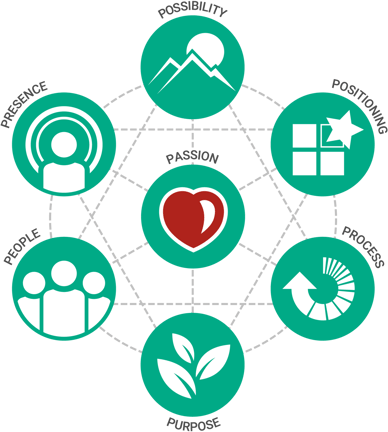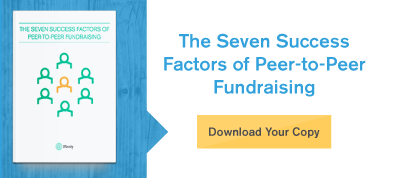Think for a minute about how many organizations you donated to last year. Be sure to count the Girl Scout cookies you bought and the donation you made to a friend for their marathon. Can you count them all on one hand or even two? Or did you lose count? Now think about how many organizations you fundraised for last year. Maybe it was one or two, or maybe it has been a few years since you’ve fundraised at all. Regardless, chances are you gave to many more organizations than you fundraised for. Why is that?
Truth is, fundraising is inherently harder than making a donation because you're asking and relying on others to help. You are reaching out to your network — the true definition of peer-to-peer — and asking others to support a cause on your behalf. And while we often don't think twice about writing a check to a group that we know in our heads — and even our hearts — is doing great work, we'll typically only make the kind of commitment that fundraising requires for organizations and causes that we're deeply passionate about.
So how do you inspire your constituents to make this commitment to your organization? To do more than write a check and become fundraisers?
Short answer: Possibility

One of the fundamental elements of Plenty’s strategy model is an organization’s ability to articulate the higher possibility it envisions for the world. It is absolutely necessary for your organization to express this to your donors. Do you envision a world where every community in every nation has clean, sustainable drinking water? Does your organization hope for a future void of human trafficking? Whatever your mission is, we cannot say it enough: Communicate it, and communicate it often.
Possibility is what encourages us. At the strategic level, possibility needs to embolden your supporters. It needs to incite hope. Your current donors are already involved; they believe in your purpose and mission and show their support via their yearly giving. Peer-to-peer fundraising is all about leveraging relationships, but if you really want to be successful at this then you have to do more than just send a standard email asking for support. We've found that the most successful way to turn your donors into fundraisers is to utilize mission stories.
Stories are powerful agents of hope because they naturally demonstrate impact in a tangible way, and when they are told well, make the listener feel like a hero. The best kind of stories remind us of what we are working towards. If your organization constructs schools in impoverished communities, give your donors a snapshot of some of your most exceptional students. While a standard email ask may inform your donors of your mission, stories — motivating, optimistic stories — will incite action and invoke change. Furthermore, stories enhance the peer-to-peer ask. Telling a story connects your donors personally to your mission, making it more likely that they will share that mission with their networks.
Søren Kierkegaard, author of Either/Or: A Fragment of Life, said, “If I were to wish for anything, I should not wish for wealth and power, but for the passionate sense of the potential, for the eye which, ever young and ardent, sees the possible.”
Inspire your donors, create in them expectancy and hope for the future, and they will feel spurred towards spreading your message to their communities.
These Related Stories



No Comments Yet
Let us know what you think